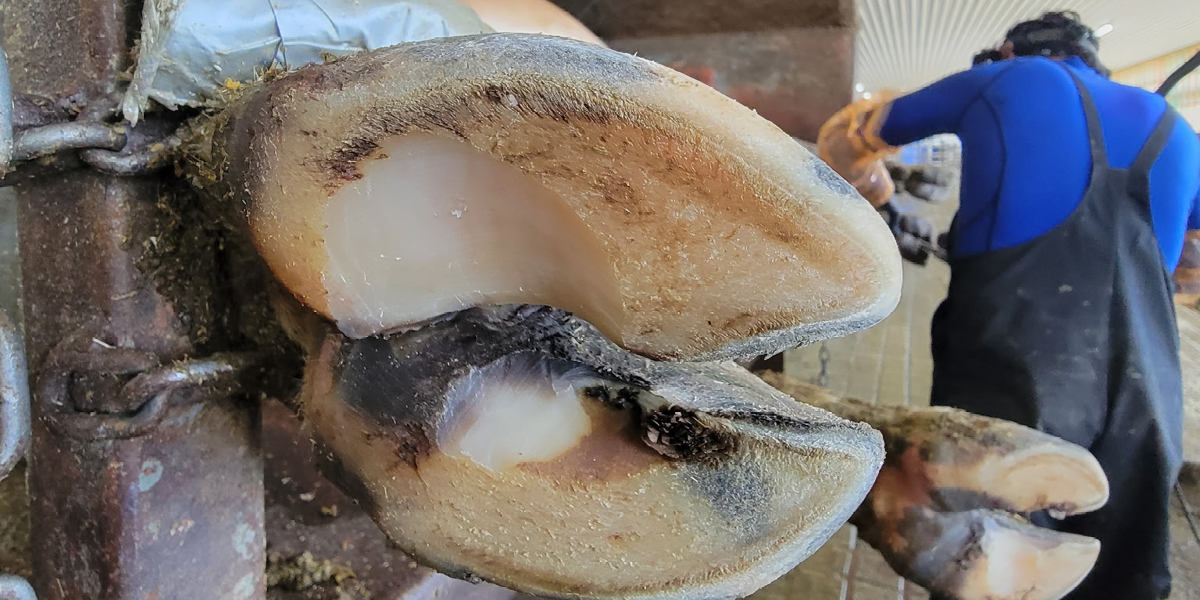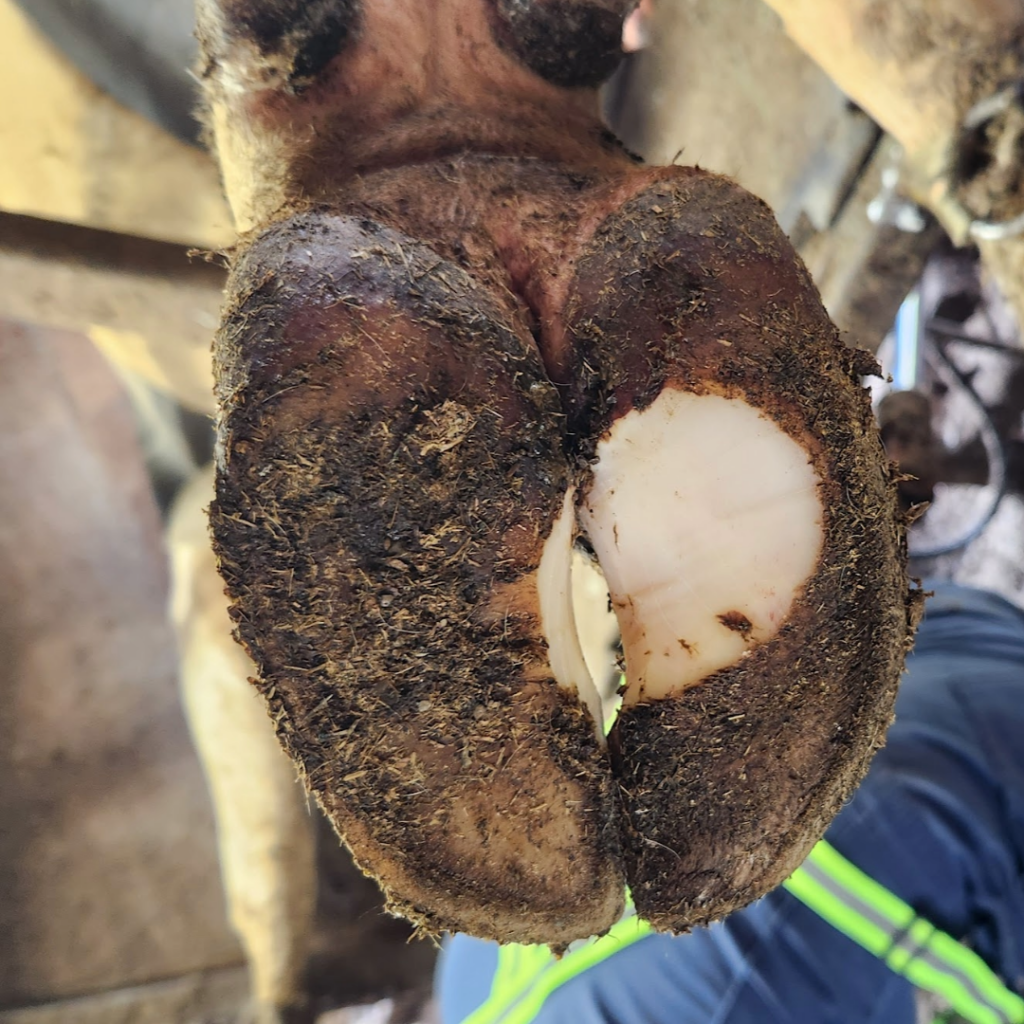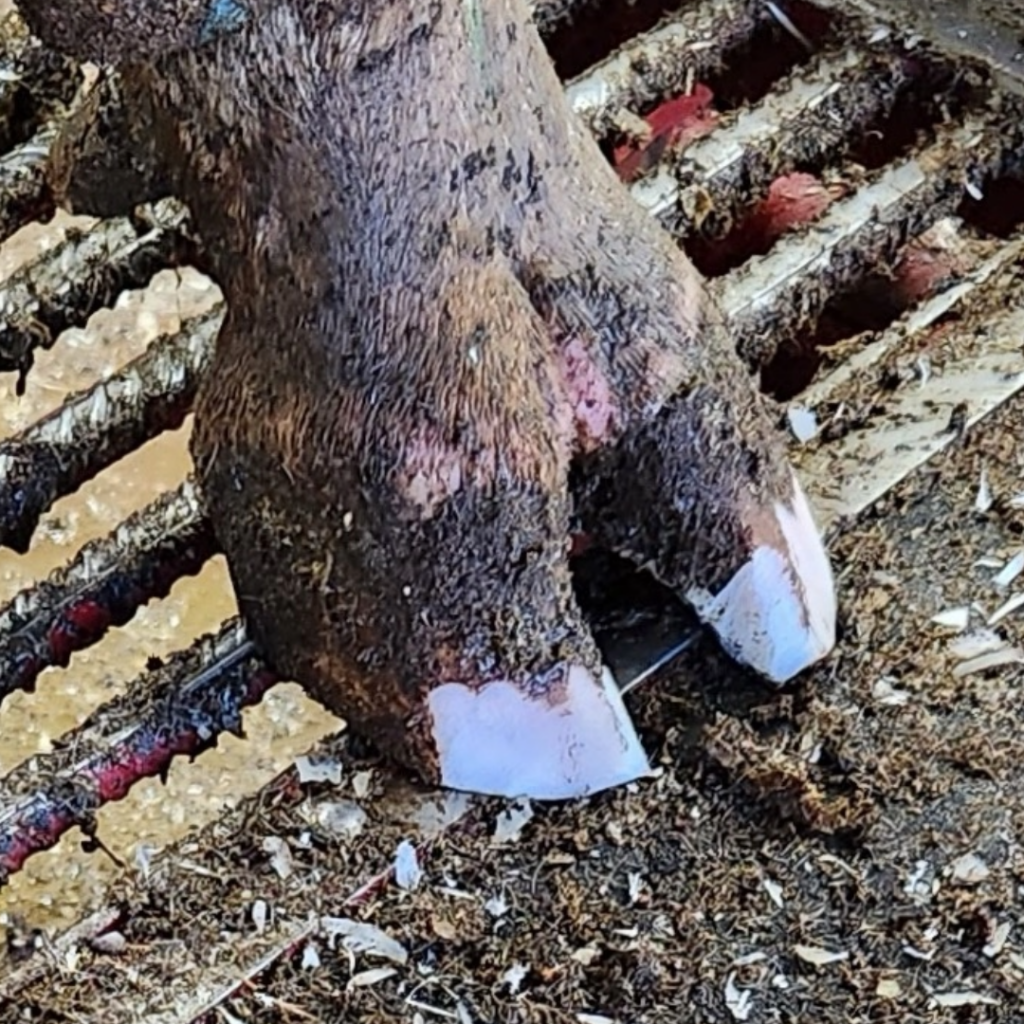Przemysł mleczarski poprawił się skokowo, jeśli chodzi o zdrowie racic. Był czas, kiedy kwestie kulawizny były kwestią drugorzędną, a plany zdrowotne racic, żywienie i kąpiele racic były uważane za dodatkowe wydatki. Teraz wiemy, że zdrowie racic krów mlecznych jest bezpośrednio związane z rentownością i wydajnością. Podczas mojej pracy jako korektor racic, wszystkie gospodarstwa, które odwiedziłem, wdrożyły jakiś program zarządzania racicami, począwszy od zaplanowanych zabiegów korekcyjnych, a skończywszy na specjalnie opracowanym żywieniu i kąpielach stóp.
Jako branża w pełni uznaliśmy i zaakceptowaliśmy znaczenie zdrowia kopyt - co prowadzi mnie do zadania pytania: Dlaczego nie robimy większych postępów w obniżaniu wskaźników kulawizn?
Ewoluujące strategie przycinania kopyt
Biorąc pod uwagę cały wysiłek, jaki mleczarnie wkładają w zdrowie racic, dlaczego zdrowie racic wydaje się nie poprawiać? Wskaźniki kulawizn stały w miejscu w ciągu ostatnich dwóch dekad, a odsetek kulawizn w mleczarniach wynosi około 24% na całym świecie. Podczas konsultacji w gospodarstwie dotyczących problemów z racicami i obserwując te niepokojące statystyki, zacząłem zastanawiać się, czy metody zarządzania racicami muszą ulec zmianie.
Strategie przycinania racic, podobnie jak wszystko inne w mleczarni, muszą ewoluować wraz z gospodarstwami. Mleczarnie mają większe stada, większe obory z większymi odległościami chodzenia i więcej okazji do zużycia racic. Oznacza to, że często nadmiernie przycinamy racice i narażamy zdrowe krowy na potencjalne problemy. Dzisiejsze krowy potrzebują więcej racic na podeszwie i powinny mieć mniej przyciętych palców, gdy pazury mierzą mniej niż 3 cale. Nadmierne przycinanie prowadzi do urazów i stanów zapalnych wewnątrz pazura - te urazy i stany zapalne odpowiadają za prawie wszystkie niezakaźne zmiany pazurów.
Nadmierne przycinanie i skracanie odstępów między kolejnymi zabiegami pielęgnacyjnymi może być atrakcyjną strategią. Wydają się one być sposobem na zaoszczędzenie czasu i zapobieganie problemom. W rzeczywistości kosztuje to mleczarnie więcej pieniędzy poprzez stagnację wskaźników kulawizn i narażanie krów na nowe problemy z racicami - co również prowadzi do spadku wydajności.
Strategie przycinania racic dla zdrowia racic krów mlecznych
Jakie jest rozwiązanie? Identyfikacja przypadków nadmiernego przycinania. Aby to zadziałało, musi to być wysiłek zespołowy w mleczarni. Producenci, kierownicy stad, dietetycy, dojarze itp. muszą być w stanie rozpoznać nadmierne przycinanie racic i wskazać je, gdy wystąpi. Szkolenie zespołu w zakresie zdrowia racic krów mlecznych i najlepszych praktyk pozwala wszystkim mieć pewność co do identyfikowania problemów i błędów.
Jako branża musimy wspierać trymerów kontraktowych i pomagać im w rozwijaniu ich umiejętności. Kiedy dowiadujemy się nowych rzeczy o zdrowiu i żywieniu krów, chętnie wspieramy weterynarzy i dietetyków w zmianie ich podejścia. Strategie korekcji racic działały lepiej 20 lat temu, ponieważ mleczarnie były inne. Nadszedł czas, abyśmy umożliwili korektorom racic ewoluowanie wraz ze zmianami. Częścią tego jest zrozumienie, jak wygląda prawidłowe trymowanie.
Przycinanie zbyt dużej ilości racic jest łatwe do wykonania, więc nadmierne przycinanie zdarza się często. Aby temu zapobiec, korektorzy racic, producenci i zarządcy stad powinni pamiętać o poniższych zasadach:
- Całkowicie białe kopyto nie oznacza prawidłowego przycięcia
- Pazury nie powinny mieć mniej niż 3 cale.
- Jeśli pazur mierzy mniej niż 3 cale, należy przyciąć mniej palców.
- Wraz ze wzrostem wielkości gospodarstwa należy pozostawić więcej racic na podeszwie, aby uwzględnić dłuższe spacery do hali.
Ocena i poprawa wykończenia kopyt
Przycinanie racic i wymagania krów są inne niż kiedyś. Podjęcie grupowego wysiłku w całej mleczarni w celu ponownego przeanalizowania strategii zdrowia racic i zrozumienia, czego wymagają krowy, może pomóc w ewolucji technik przycinania. Ilość pozostawiona na kopycie jest równie ważna, jeśli nie ważniejsza, niż to, co zostało z niego obcięte. Współpraca między zespołem hodowlanym a korektorem racic może pomóc zidentyfikować i skorygować te problemy.
Kulawizna nie zawsze jest kwestią żywienia lub zarządzania, a ponowne przeanalizowanie strategii przycinania kopyt może szybko odkryć, czy występuje nadmierne przycinanie.
FAQ
Dlaczego krowy mleczne mają problemy z racicami?
Problemy z racicami u krów mlecznych mogą być spowodowane różnymi czynnikami, w tym chorobami zakaźnymi, nadmiernym przycinaniem racic, niedoborami żywieniowymi i kwestiami związanymi z zarządzaniem. Członek zespołu Zinpro® ds. bydła mlecznego może współpracować z Tobą w celu zidentyfikowania problemów z racicami i wdrożenia rozwiązań.
Zinpro® Availa® Dairy Wspiera zdrowie racic krów mlecznych, wytrzymałość racic i odporność, dzięki czemu krowy mogą osiągać najlepsze wyniki, gdy pojawiają się wyzwania.
Czym jest reguła 7 trymów?
Reguła 7-trim jest narzędziem zaprojektowanym dla holenderskiego 5-stopniowego procesu przycinania kopyt. Aby zapoznać się z dodatkowymi narzędziami i referencjami dotyczącymi przycinania kopyt, sprawdź te zasoby Zinpro:
- Zinpro® FirstStep® Dairy Hoof
Program wspierający zdrowie i opiekę nad racicami krów mlecznymi - Zinpro® Cyfrowy przewodnik po zapaleniu skóry
- Zinpro® Przewodnik identyfikacji zmian na pazurach
- Samouczki Zinpro® dotyczące przycinania racic krów mlecznych
Jak przycinać racice bydła mlecznego?
Prawidłowe przycinanie racic krów mlecznych ma kluczowe znaczenie dla ochrony dobrostanu zwierząt i wspierania optymalnej wydajności. Obejrzyj poniższe filmy, aby zapoznać się z instrukcjami przycinania racic zalecanymi przez ekspertów Zinpro.








